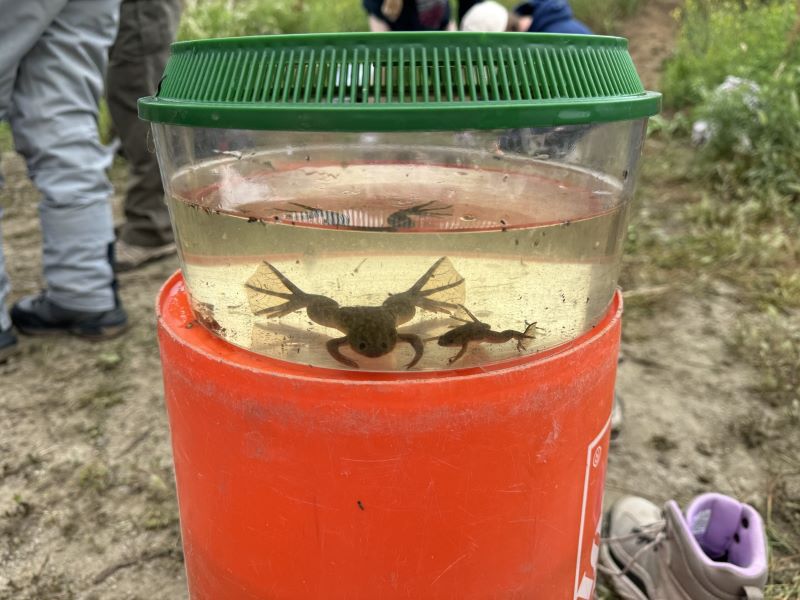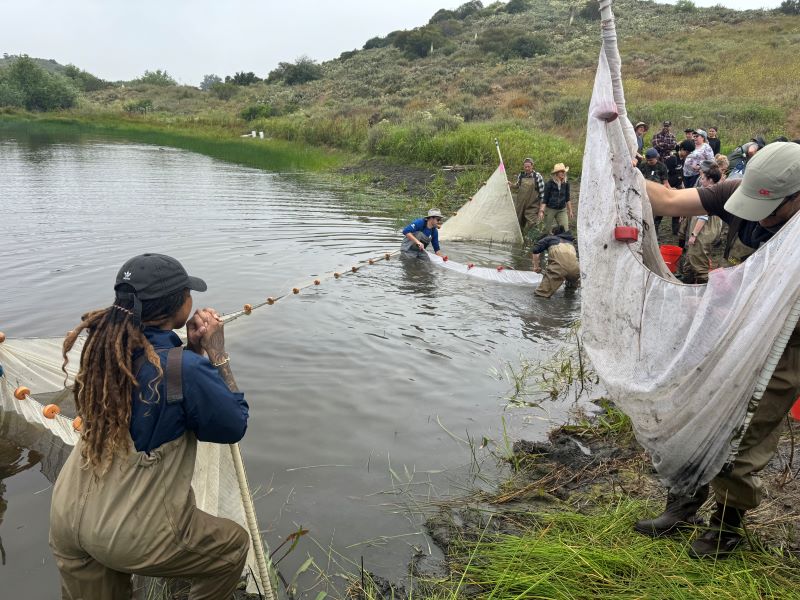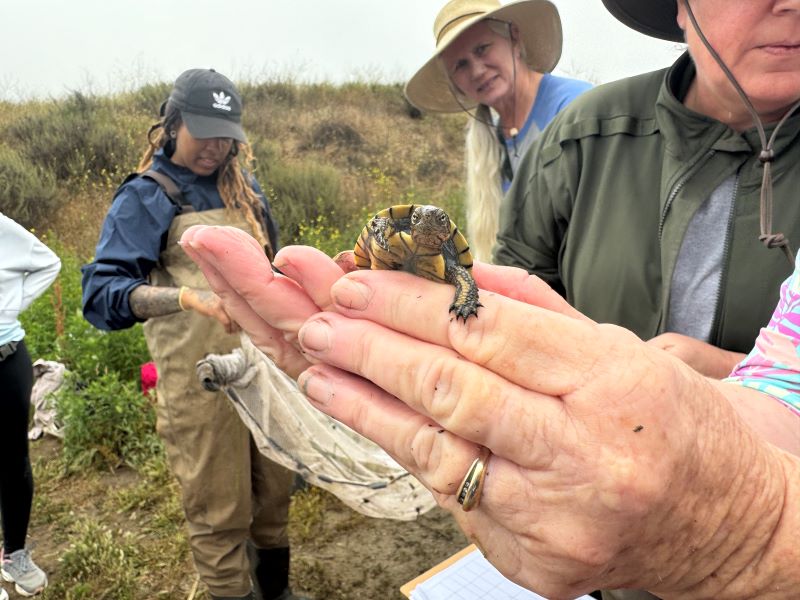
Press release written by Luke Benson-WSP AmeriCorps member serving with RCDSMM
The Watershed Stewards Program (WSP) is dedicated to improving watershed health by actively engaging in restoration science, civic service, and community education while empowering the next generation of environmental stewards. A program of the California Conservation Corps, WSP is one of the most productive programs for future employment in the environmental field. WSP is administered by CaliforniaVolunteers, the Office of the Governor and sponsored by AmeriCorps and the California Department of Fish and Wildlife.
If you have taken a walk anywhere near a creek these last few months there is a good chance you’ve heard the ensemble of chorus frogs looking for love and securing their mates. Now as we move into July, mating has settled down, eggs have been laid, and tadpoles begin to emerge. The journey of the tadpole is no ordinary feat. They’re born no larger than a watermelon seed and within only a few weeks metamorphosize into a fully developed frog, escaping predation all along the way.
However, as populations reproduce and grow there is a less welcome frog in the mix—the invasive African Clawed Frog (Xenopus laevis). These frogs were recently introduced to the Santa Monica Mountains and have had devastating consequences for the native ecosystem. But do not fret! Earlier this month, the Resource Conservation District of the Santa Monica Mountains (RCDSMM)—In partnership with the Watershed Stewards Program (WSP) and the National Parks Service (NPS)—hosted the first ever volunteer based African Clawed Frog removal event and it was a huge success!

With a fantastic turnout of just under 50 volunteers, the group took turns netting frogs with seine nets that are dragged along the surface. In record time, everyone became master field ecologists. The pond was deep, and a few unlucky folks filled their waders with water, but the effort was valiant. The team caught over 50 African Clawed Frogs in about 3 hours, and believe as they hone their techniques for future events, those numbers could be exceeded by far.

A highlight of the event came with a last pull of the seine net, where a baby Southwestern Pond Turtles recovered. This species of turtle is soon to be federally listed as a threatened species due to population decline associated with predation and is a physical representation of why this work is important. The African Clawed Frog poses a risk to their dwindling population because they eat the young turtles, and the efforts of the team to remove these frogs will hopefully aid in the turtle’s recolonization of the pond.




